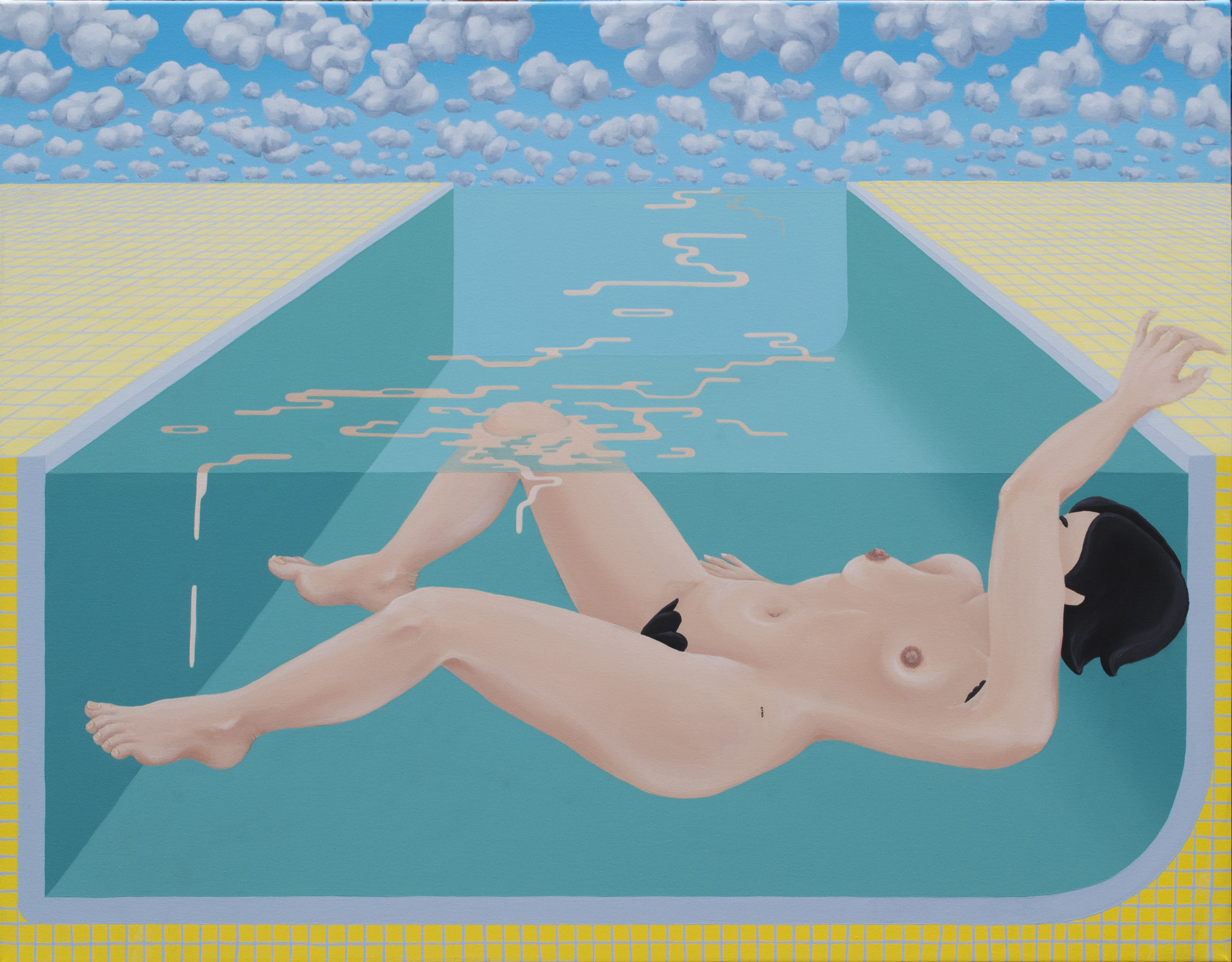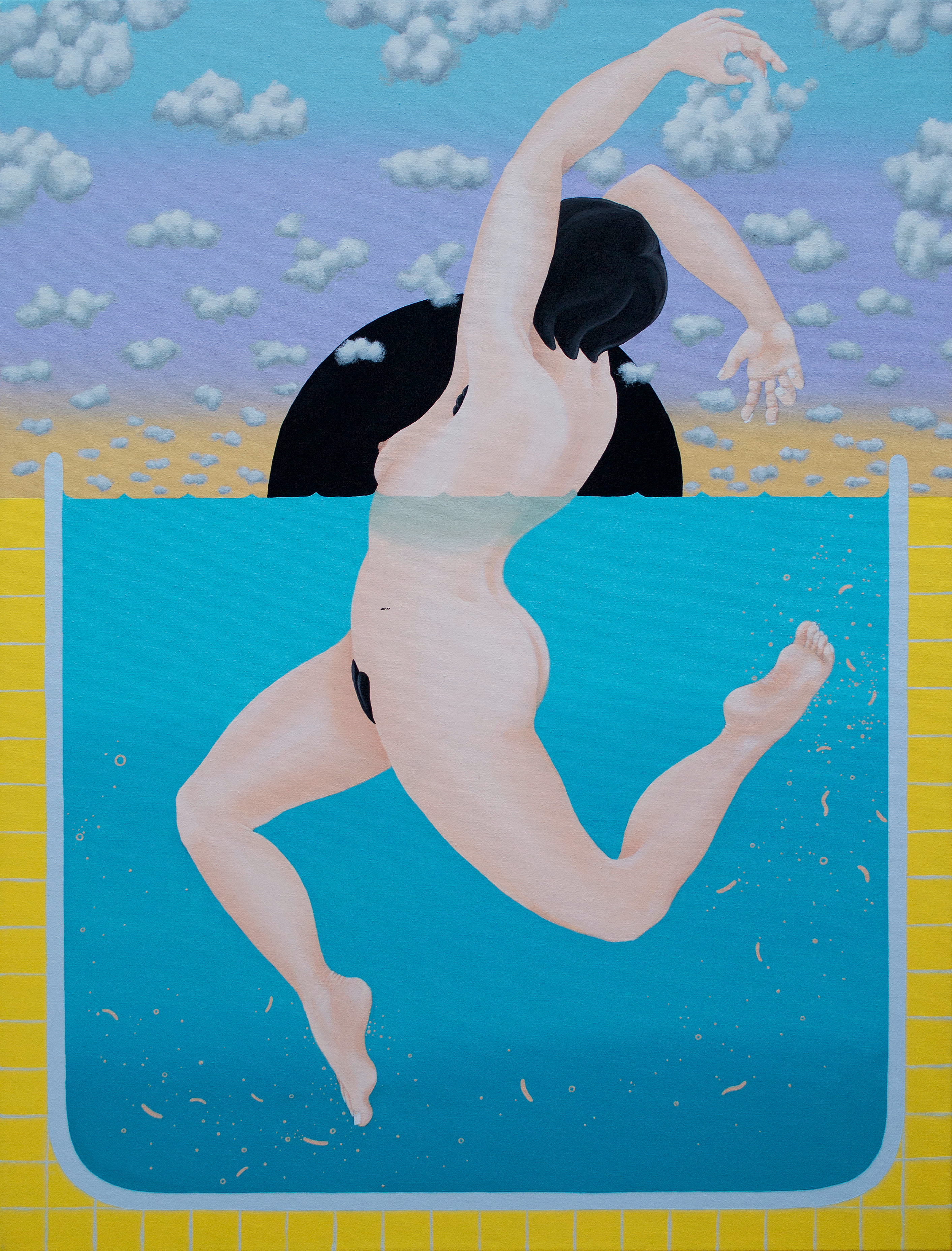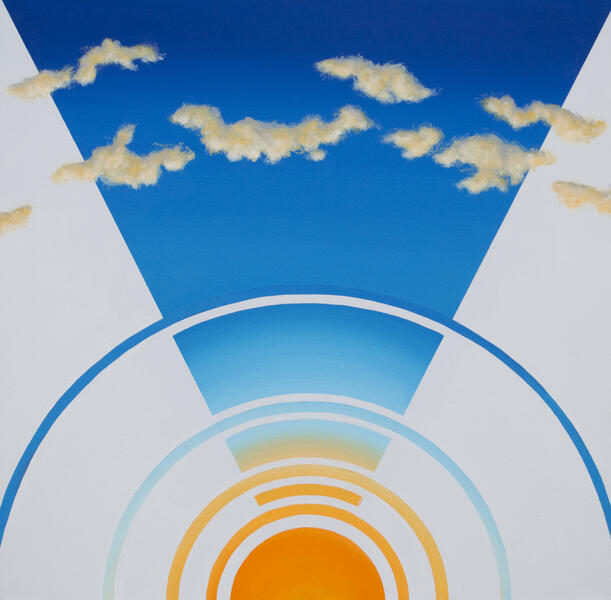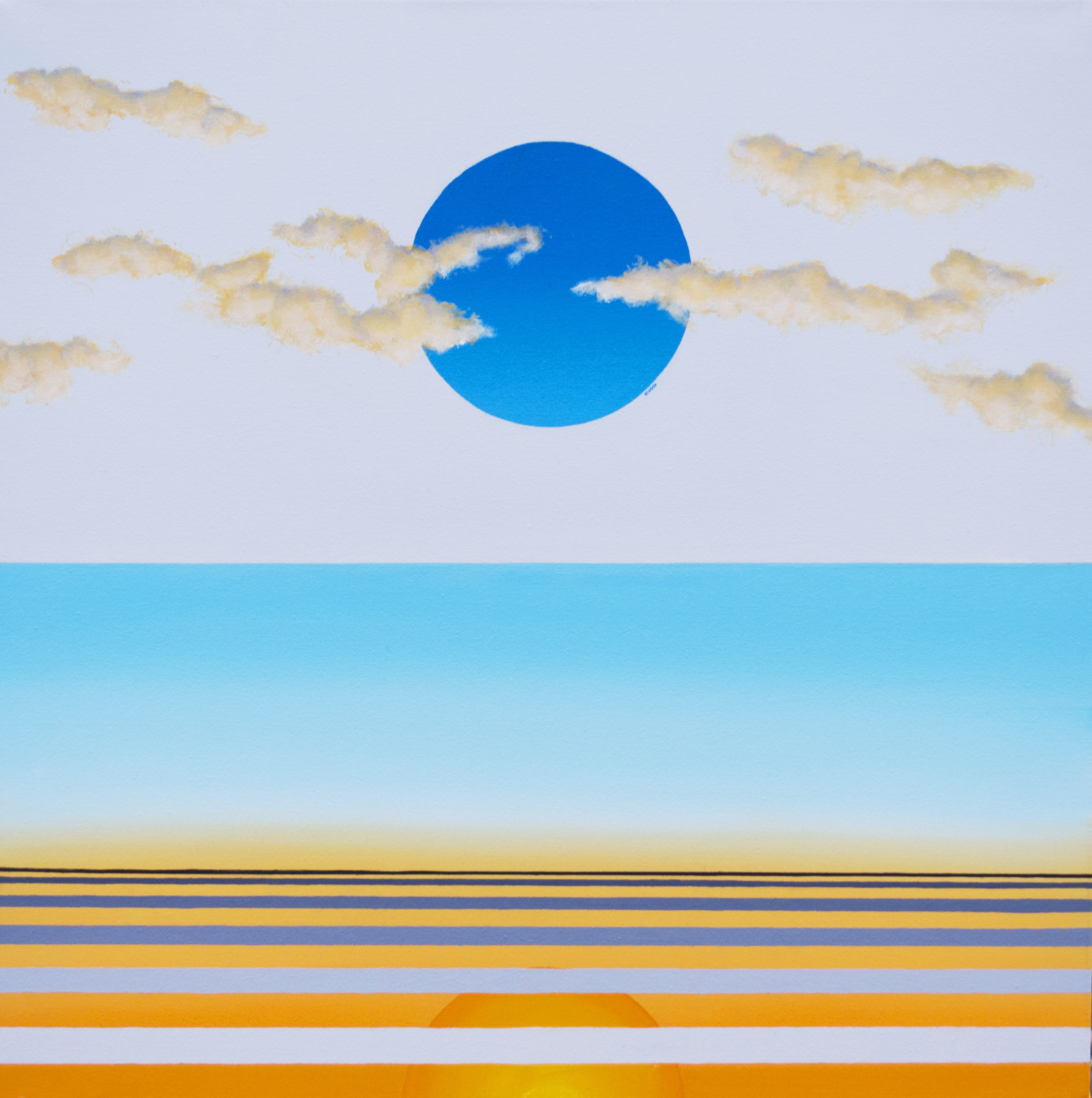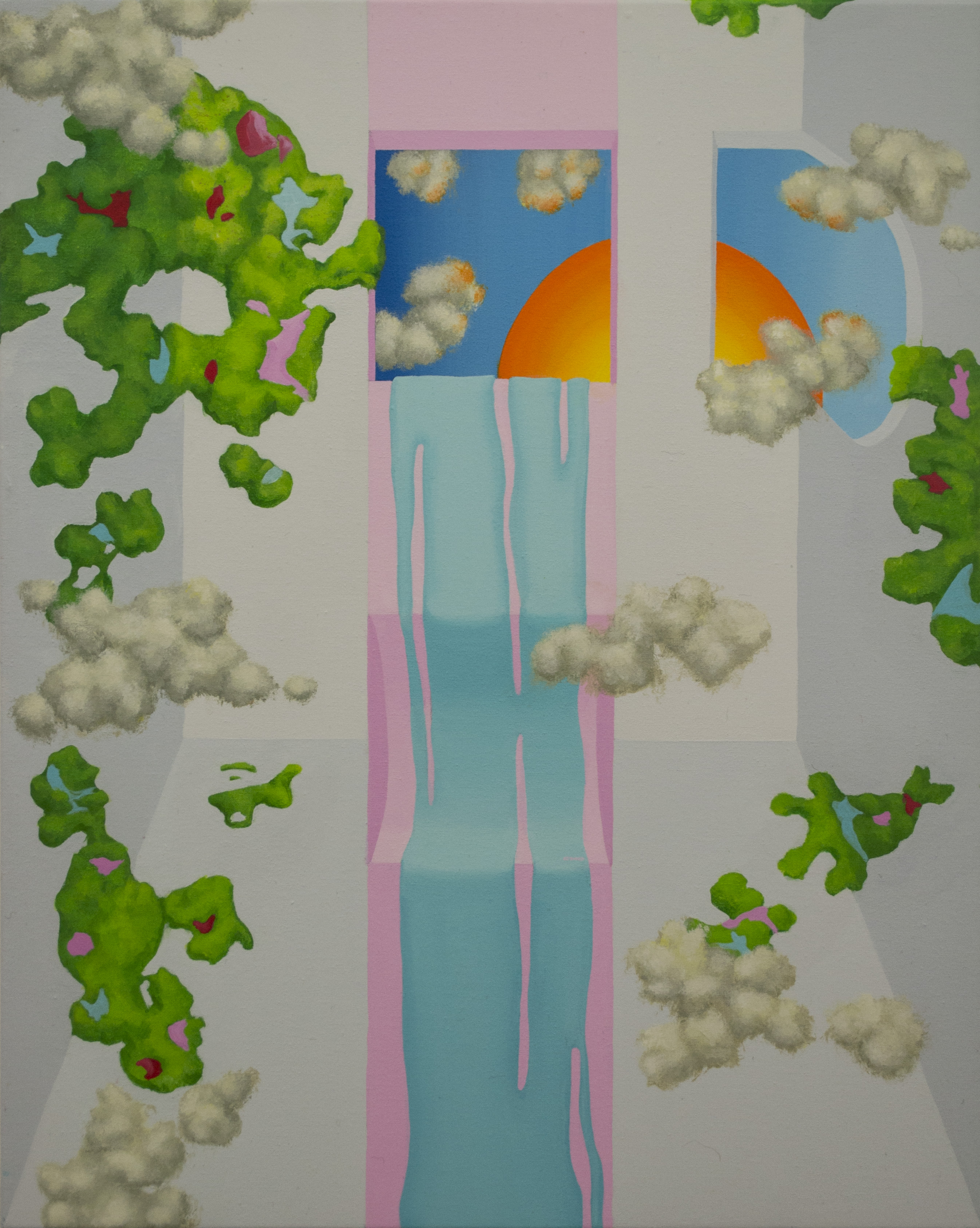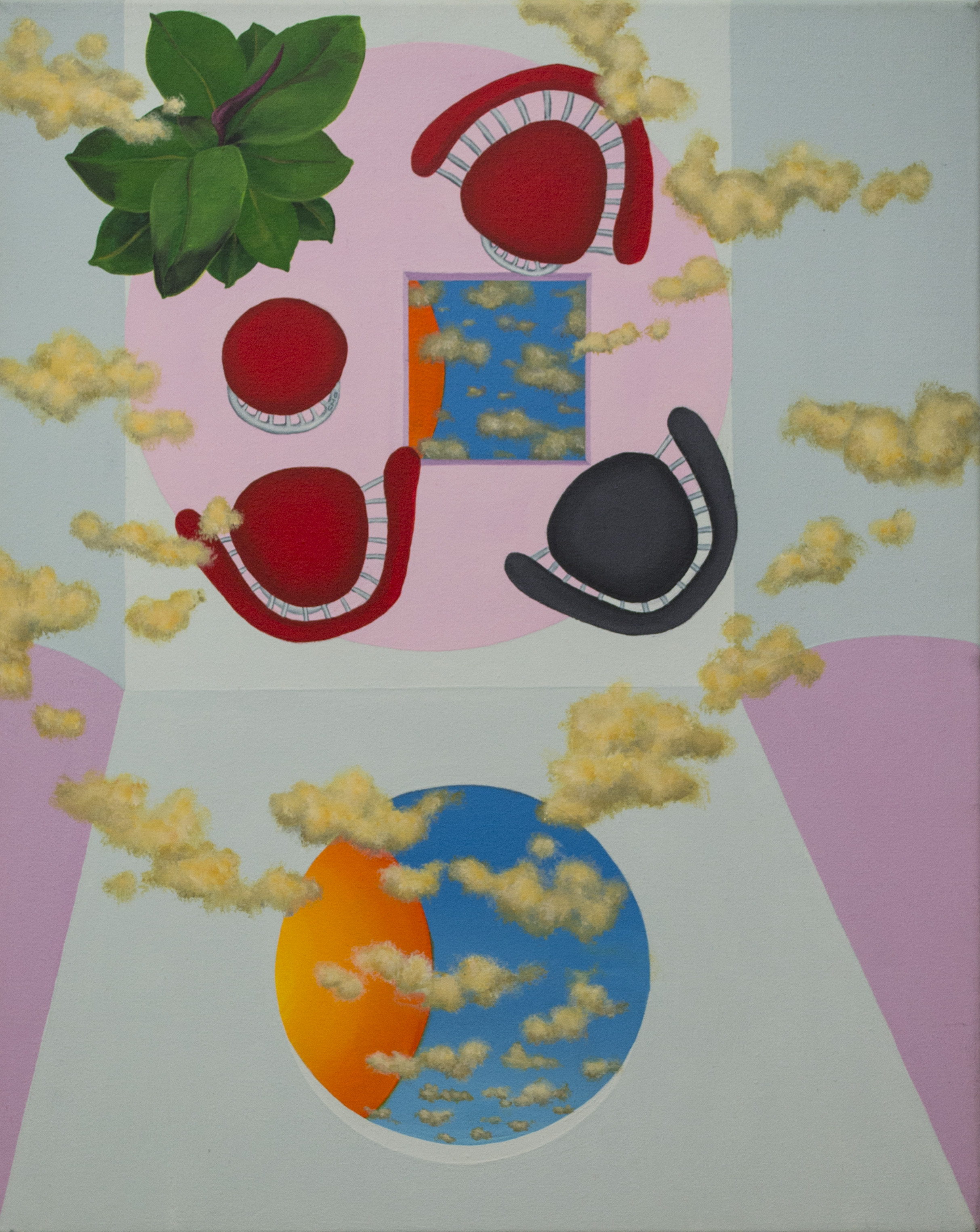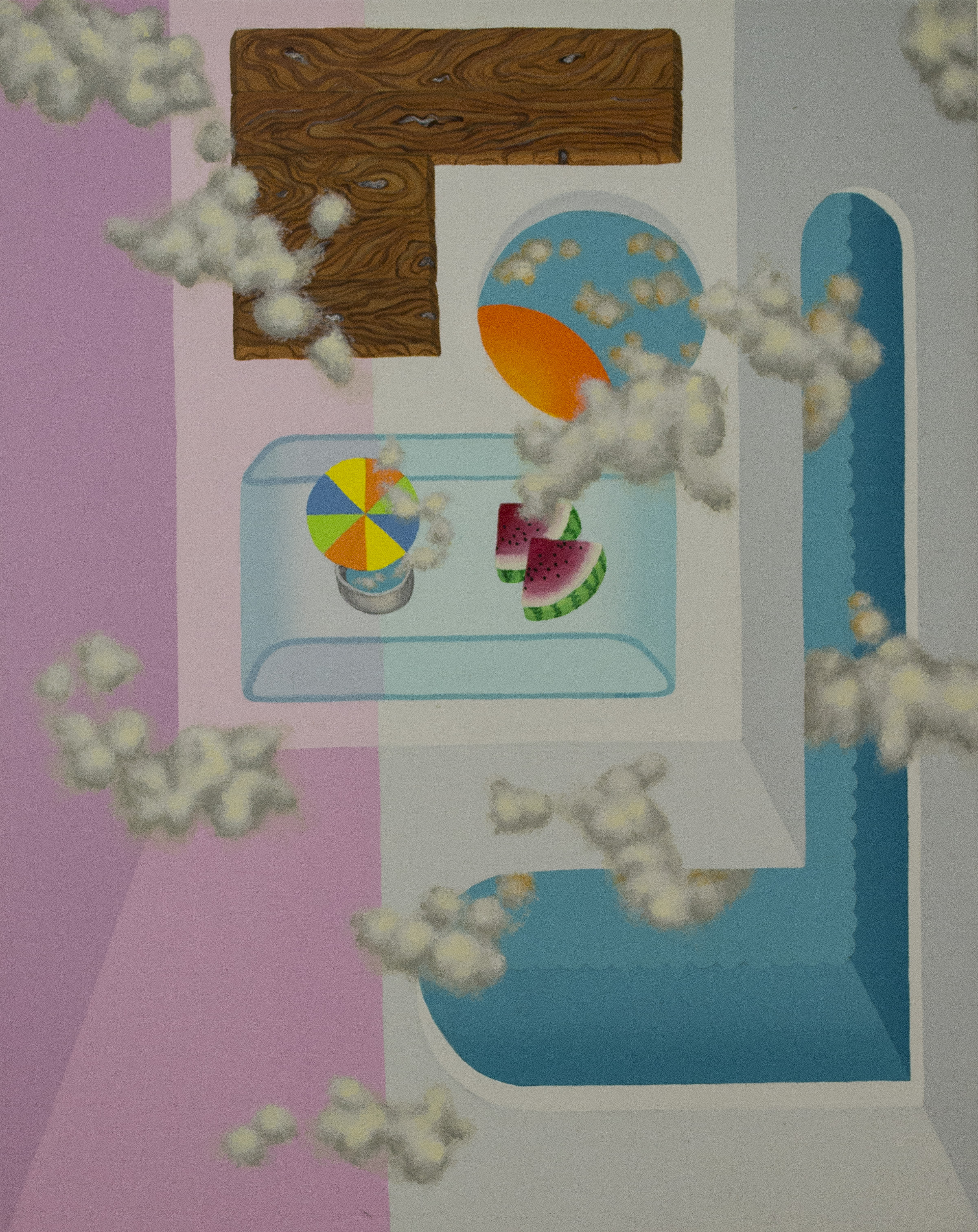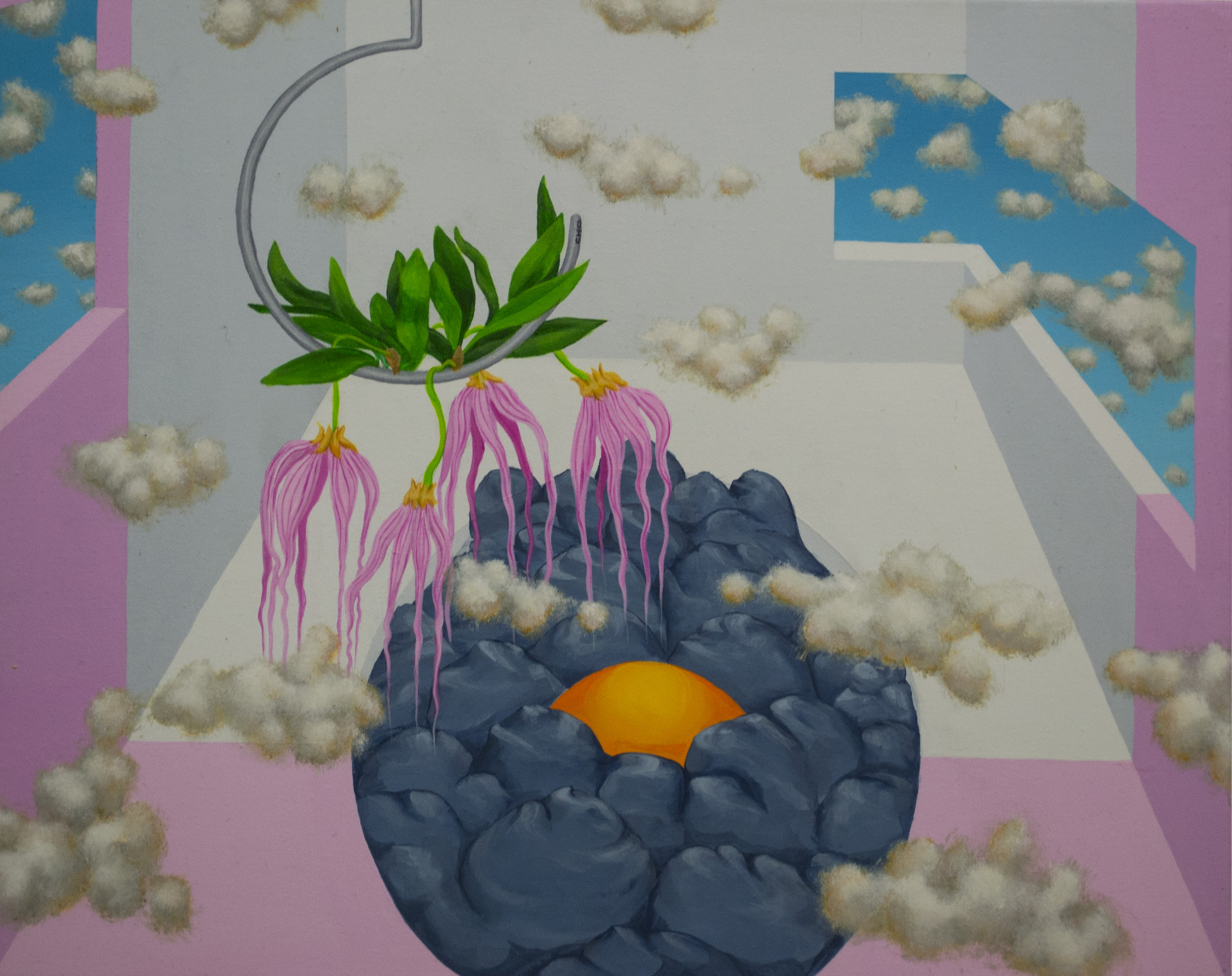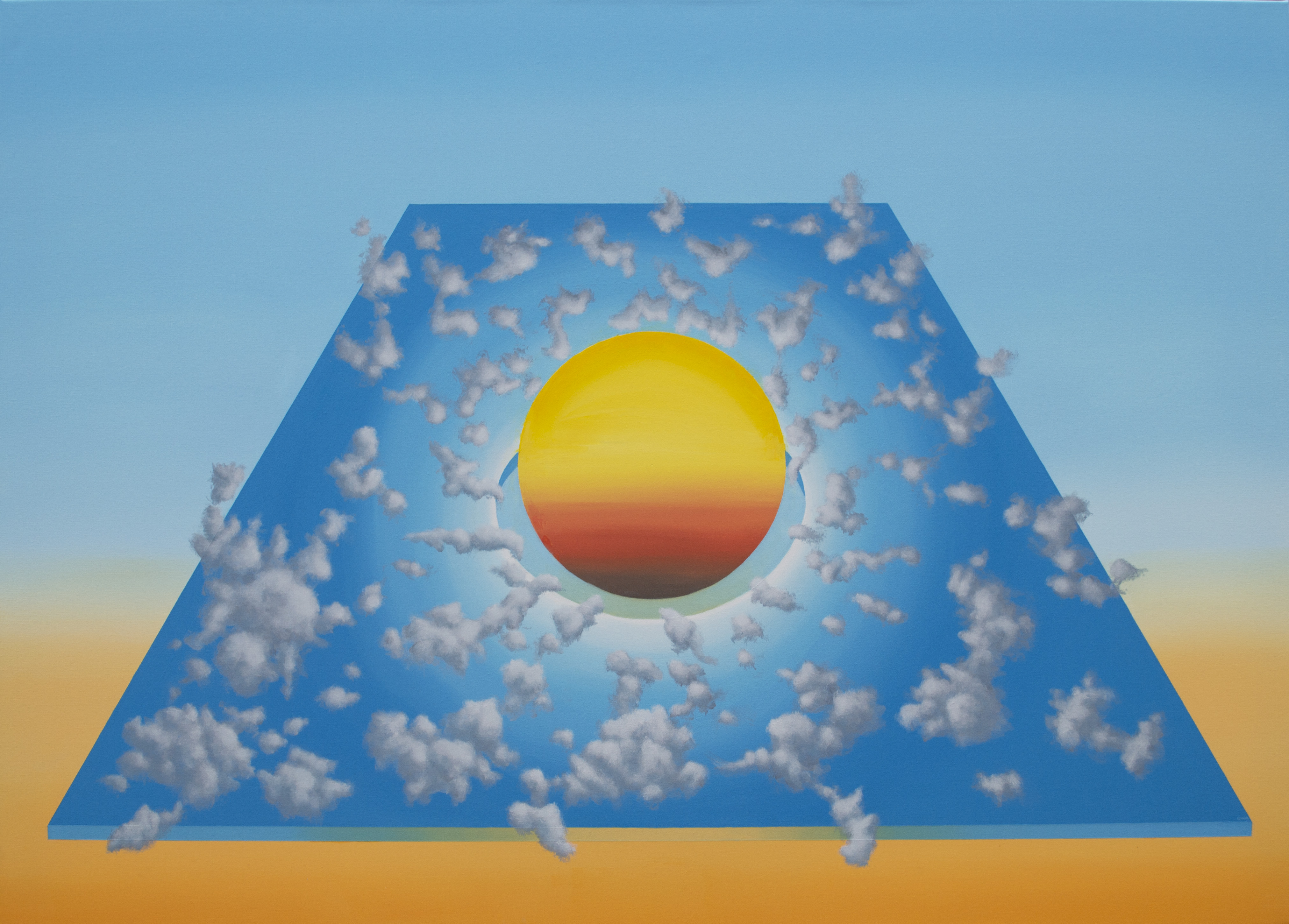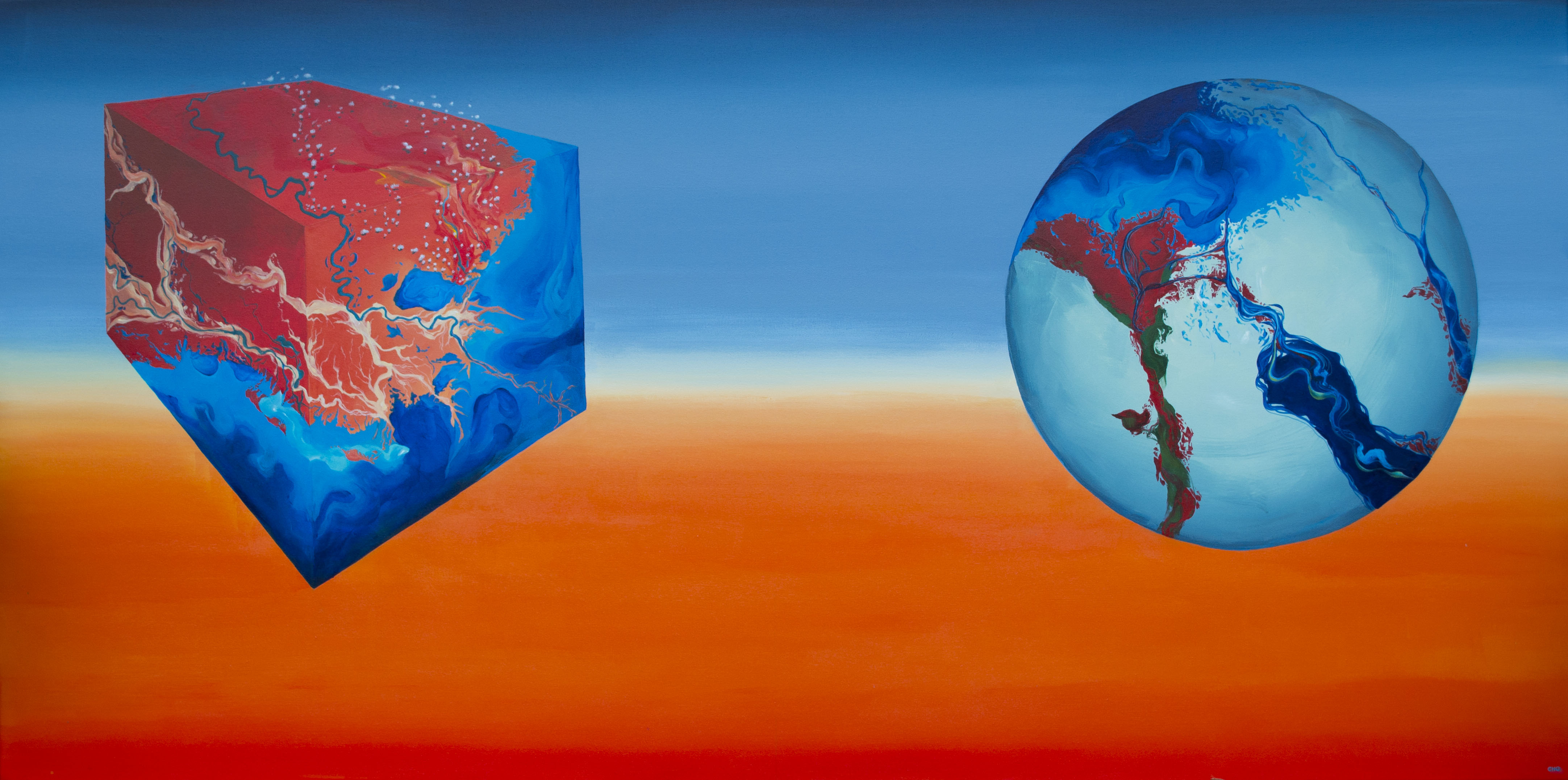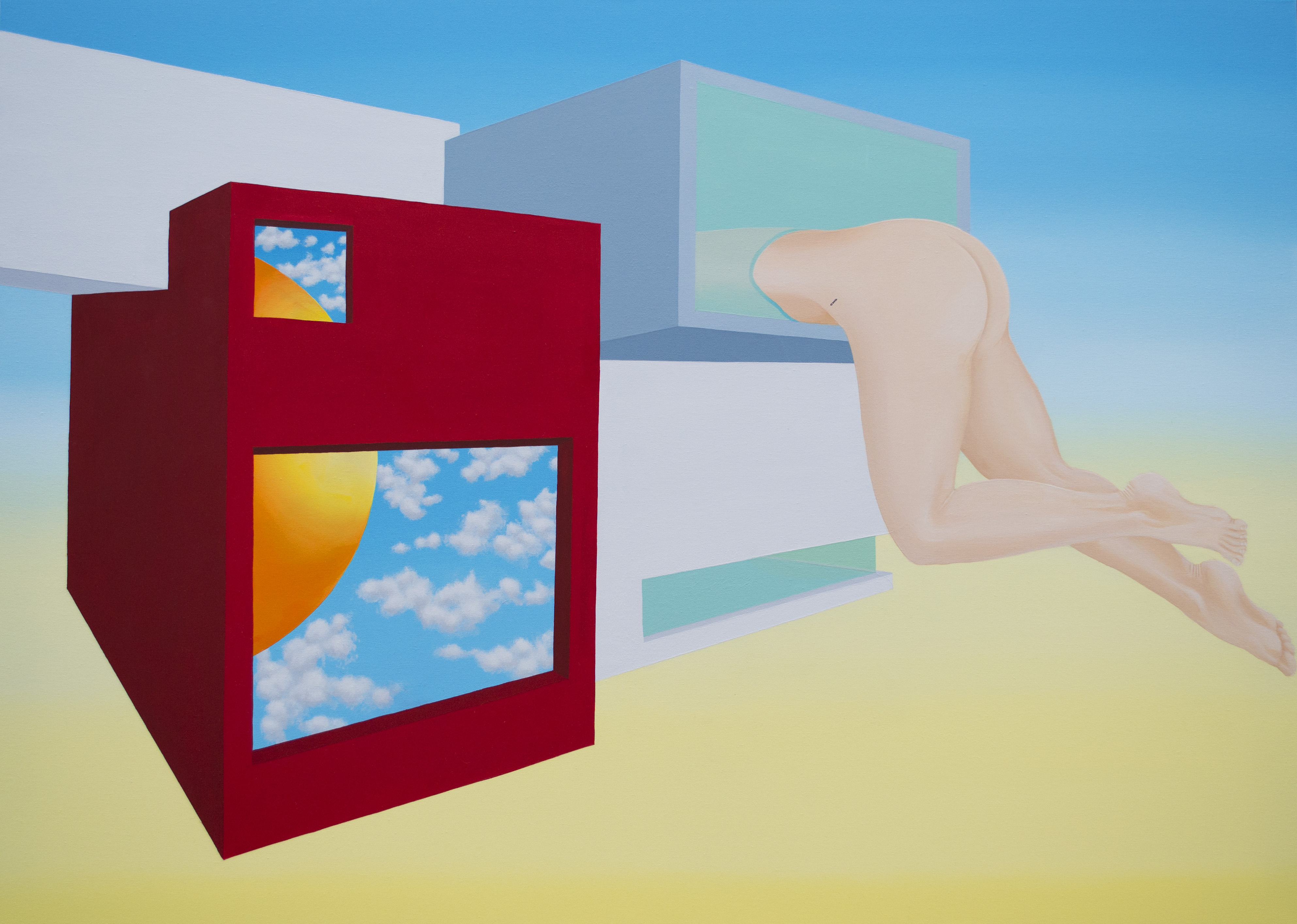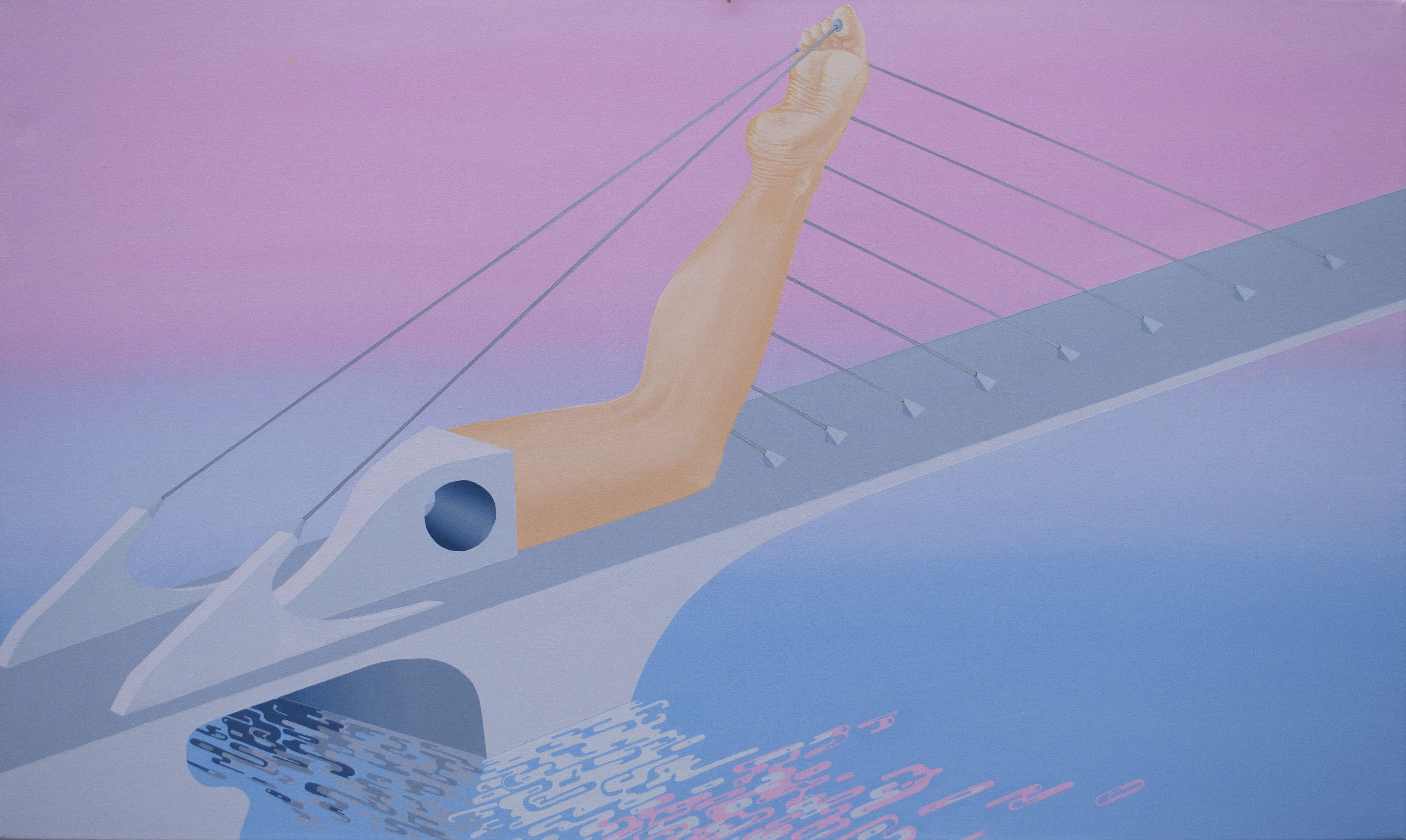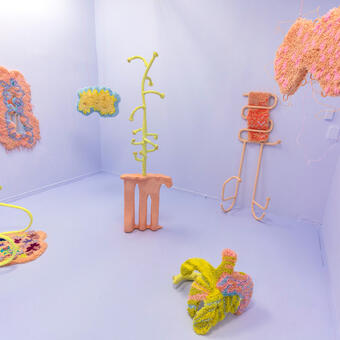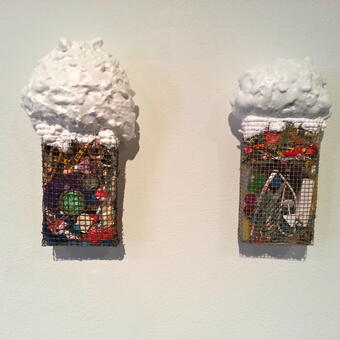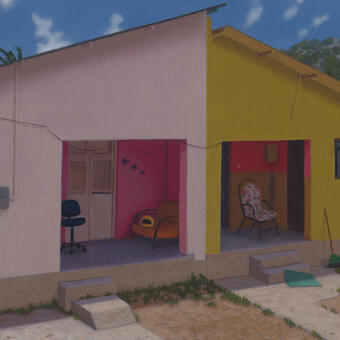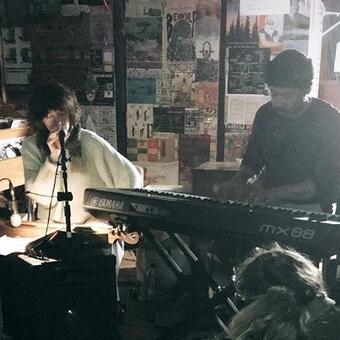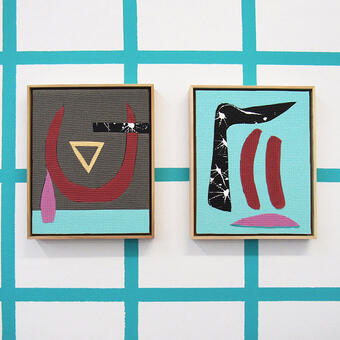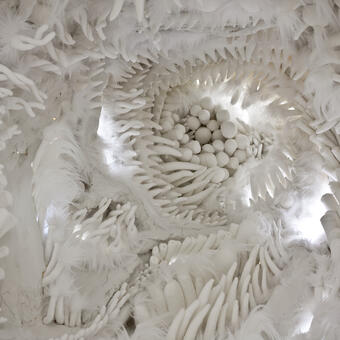About Se Jong
Se Jong (Born in Seoul, South Korea, 1978) makes art to explore the extent of her imagination and broaden her creative domain. She began painting while pursuing her PhD in Environmental Engineering. Her training as a scientist taught her to become observant and think critically, and she cultivated her brand of creative expression that combine multidisciplinary perspectives and approaches.
Matisse in bath
I first saw Matisse’s “Large Reclining Nude” at the Baltimore Museum of Art. Next to the painting, there is an explanatory plaque, showing how Matisse transitioned from precise depictions of the figure to more abstracted colors and shapes. It struck me that this generalization required rigor and imagination, and I decided to explore Mattisse’s paintings as a way to expand my understanding of creative expression.
Impressionists brought brilliant colors back to Western art after a period of realism, where light and shadow prevailed over color. Japanese ukiyo-e art prints influenced Impressionist painters, and this is evident not only in the colors, but also in the style and subject matter. Likewise, Matisse’s work is evocative of the flatness and colors of Japanese art, but also is reminiscent of decorative Islamic art, and sculptural African art. Through the synthesis of multiple cultures, Matisse created art works that tantalize and inspire so many people to this day.
My experiment in interpreting Matisse’ work is inspired by this possibility for synthesis across multiple ideologies and cultures. There is an advise from Cezanne to “deal with nature by means of the cylinder, the sphere, and the cone.” I approach painting with an appreciation for the complexities of our reality as a scientist, and I solve the challenge of representing this complexity. Einstein said, everything should be “made as simple as possible, but not simpler.” Painting Matisse interpretations presented me with the challenge of painting full continuous figures, which I had never done, and I approached this challenge by meeting a compromise between Matisse’ beautiful generalization of figure and my proclivity toward precision. I wanted these paintings to echo Matisse’s shapes and colors, but also create something new by merging my identity as an Asian woman and a scientist with Matisse’s.
Problems with nudes
Nudes are problematic and I was hesitant to create images that reinforce the particular existence of women that has been prevalent in the usage and conventions of Western art. From Berger’s Ways of Seeing: “To be born a woman has been to be born…into keeping of men… A woman must continually watch herself. She is almost continually accompanied by her own image of herself. Whilst she is walking across a room or whilst she is weeping at the death of her father, she can scarcely avoid envisaging herself walking or weeping.” In other words, women are less present than seen. Take Matisse’ reclining nude, for example; it’s a picture of a naked woman who is posing because she is aware of the surveyors’ gaze, including Matisse’s. So, I was conflicted about creating female nudes as objects to be seen. Painting these nudes, however, forced me to think about the implications of male gaze in women’s lives and how to resolve them in my own work.
How do I preclude the male gaze in female nude paintings? I concluded that if the figures are present, and are comfortable with their presences, then they are not merely posing to be seen; rather, they are daring to take up space in the world.
Traditional female nudes are often supine as if they lack strong spine to stand by herself. You take away the spine; women nevertheless survive, maybe with new found strength. In these paintings, the figures are quite spineless, but this spinelessness allows for certain vitality, with figures lunging, sliding, and jumping. The absence of features and orifices came about as a whim, but this strategy allowed me to avoid assigning individuality to these figures. In fact, they are not individuals; they are not even humans. They are derivatives of me, and all the things I have seen in my life with my female eyes.
These nudes were also fun to paint. Georgia O’Keefe never meant to paint human vulvae with her flowers, and insisted that her skulls were not meant to convey death; they were simply “nice things” to paint. I approached these nudes the same way. The nudes were fun to paint with all the complexity of bones and muscles hidden under the layer of skin.
-
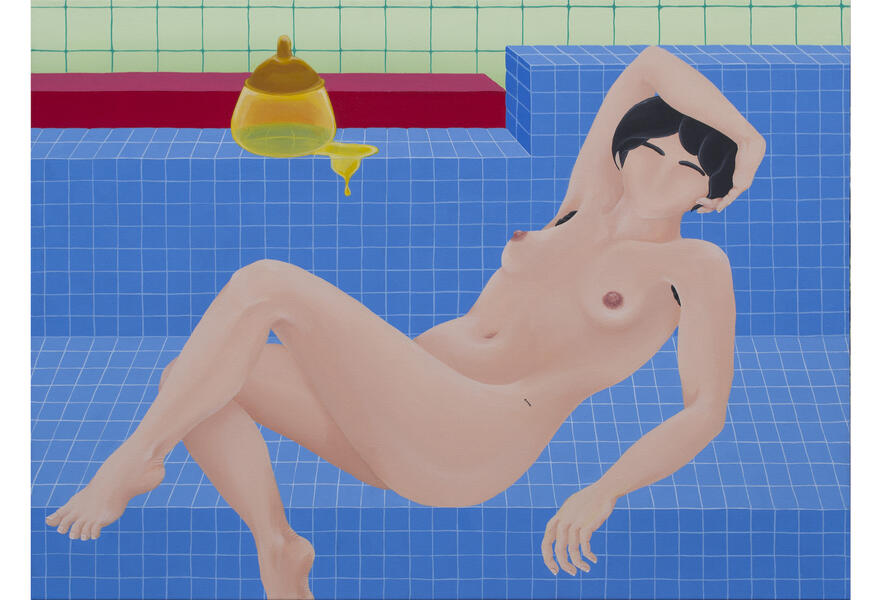 large Reclining NudeLarge reclining nude (2017) 30”x40” Acrylic on canvas
large Reclining NudeLarge reclining nude (2017) 30”x40” Acrylic on canvas -
 Nude with WavesNude with waves (2018) 30”x40” Acrylic on canvas
Nude with WavesNude with waves (2018) 30”x40” Acrylic on canvas -
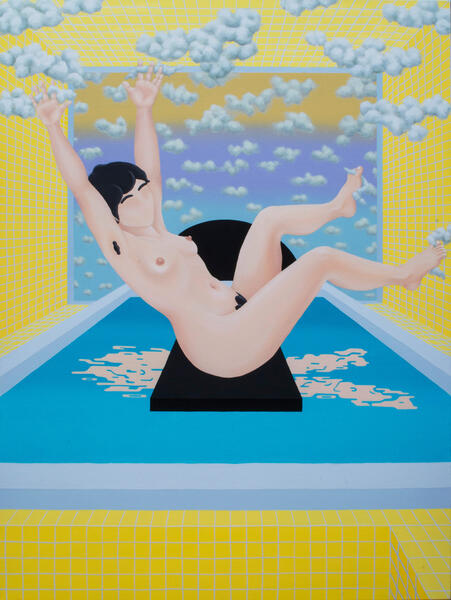 TobagonTobagon (2018) 48”x36” Acrylic on canvas
TobagonTobagon (2018) 48”x36” Acrylic on canvas -
 Nude with Hair in the WindNude with hair in the air (2018) 48”x36” Acrylic on canvas
Nude with Hair in the WindNude with hair in the air (2018) 48”x36” Acrylic on canvas -
 Current Gallery InstallationInstallation view
Current Gallery InstallationInstallation view
in/outside of room/f
My house will have a roof.
-Paul Eluard, Dignes de vivre, Julliard, Paris, p. 115
You can read a room, or you can read a house. Both are psychological diagram that guide artists in their analysis of intimacy[1].
The artist used the rooms and roofs as a context for her to explore intuition. The placements of the objects inside of a room or outside on a roof are arbitrary with no symbolic gestures. Jung, in “depths of the unknown:” intuition is our interface with the whole of our potential.2 She used intuition to achieve harmoniousness, using whatever ability she has, in the spaces portrayed. The result is a certain style: a precise depiction of objects using controlled color selection. Cocteau writes: “Style is the soul, and unfortunately with us the soul assumes the form of the body” in refuting the decorative encumbrance any work of art with style may face. These paintings are things depicted through a certain style that should be experienced, because there is no content in these paintings, but hopefully they will excite or captivate the audience. This is the most intimate way the artist can connect with the audience.
[1] Bachelard, G., Stilgoe, J.R., 1994. The Poetics of Space, Reprint edition. ed. Beacon Press, Boston.
-
 Roof with Waterfall20"x16" acrylic on canvas 2017
Roof with Waterfall20"x16" acrylic on canvas 2017 -
 Roof with Pool20"x16" acrylic on canvas 2016
Roof with Pool20"x16" acrylic on canvas 2016 -
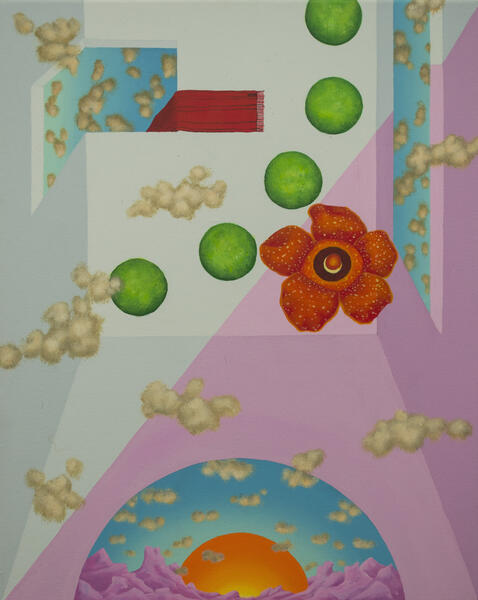 Roof with Flower20"x16" acrylic on canvas 2017
Roof with Flower20"x16" acrylic on canvas 2017 -
 Roof with Chairs20"x16" acrylic on canvas 2016
Roof with Chairs20"x16" acrylic on canvas 2016 -
 Roof with Watermelons20"x16" acrylic on canvas 2016
Roof with Watermelons20"x16" acrylic on canvas 2016 -
 Room with Sun20"x16" acrylic on canvas 2017
Room with Sun20"x16" acrylic on canvas 2017 -
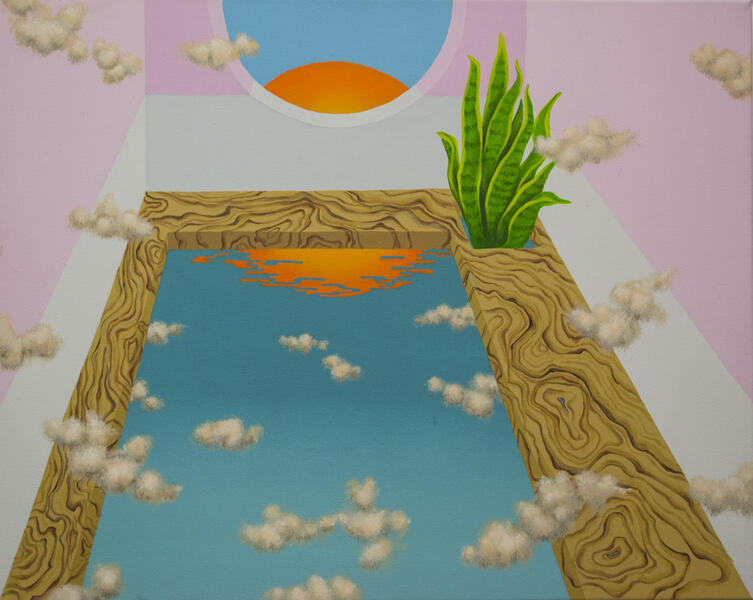 Room with Pool20"x16" acrylic on canvas 2016
Room with Pool20"x16" acrylic on canvas 2016 -
 Room with Marbles20"x16" acrylic on canvas 2017
Room with Marbles20"x16" acrylic on canvas 2017 -
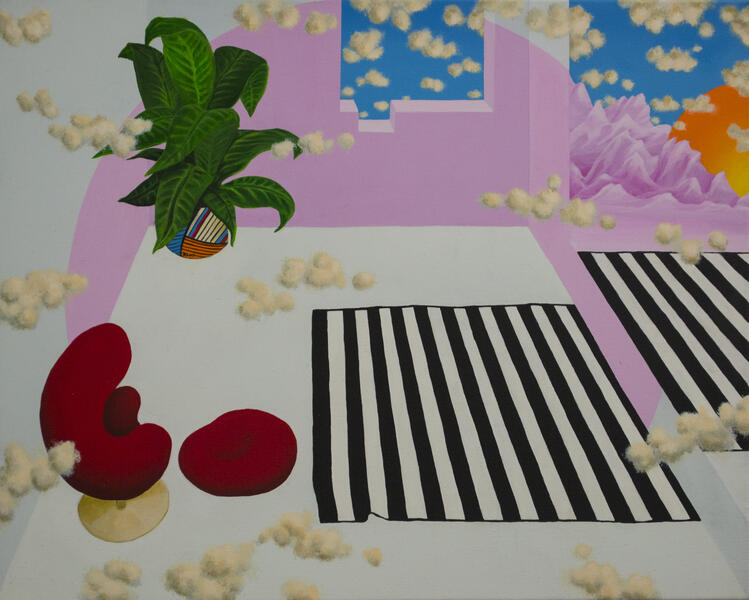 Room with View20"x16" acrylic on canvas 2016
Room with View20"x16" acrylic on canvas 2016 -
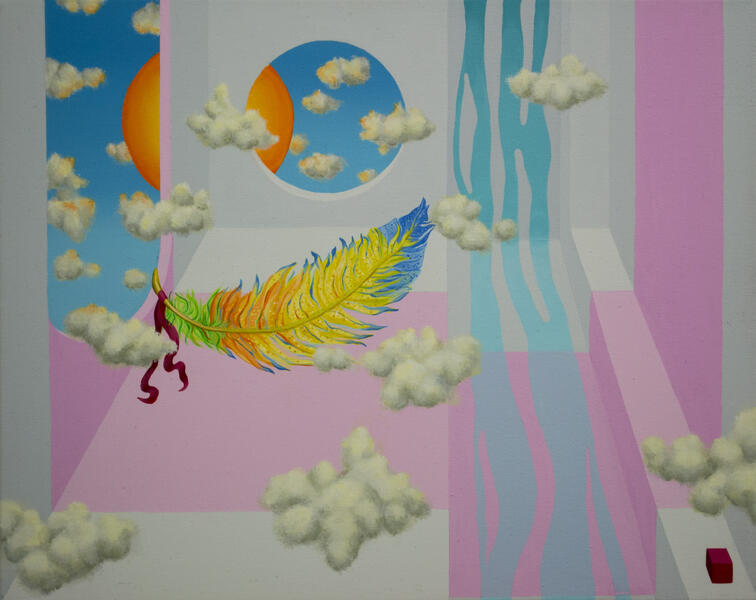 Room with Feather20"x16" acrylic on canvas 2017
Room with Feather20"x16" acrylic on canvas 2017
Evaporative images
“Art is the game of extending our ‘shape of real’ without the necessity of present practical affirmation.”[1]
Paintings are static but musical composition (not on paper but in the air) is dynamic. Therefore, while the representations of the clouds are static, we invite the audience to imagine the dynamic and constant transformation of clouds as the sound atmospherically evolves around them. The dual installation of sound and images is intended to involve audience in multiple modes of participation, stimulating both visual and auditory senses thereby creating an environment where emersion is possible. Rather than the audience merely looking into pictorial boxes as an external examiner, we invite the audience to experience the visual images as a context for extending the shape of real through synthesis of their memories of shapes of real.
[1] Irwin, R. Notes toward a Conditional Art. (J. Paul Getty Museum, 2011).
-
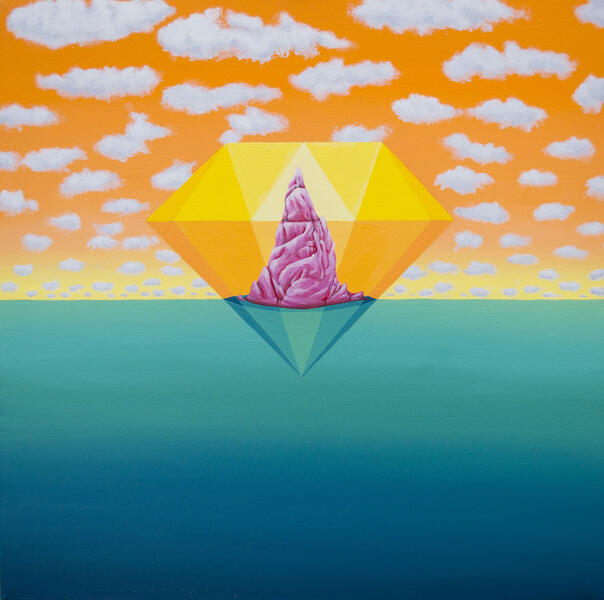 Diamond horizon: pink in oragneAcrylic on canvas 24inx24in May 25, 2015
Diamond horizon: pink in oragneAcrylic on canvas 24inx24in May 25, 2015 -
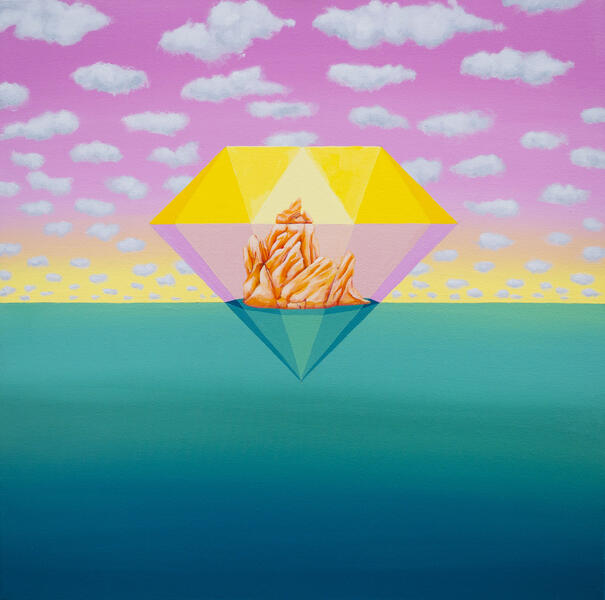 Diamond Horizon: orange in pinkAcrylic on canvas 24inx24in May 25, 2015
Diamond Horizon: orange in pinkAcrylic on canvas 24inx24in May 25, 2015 -
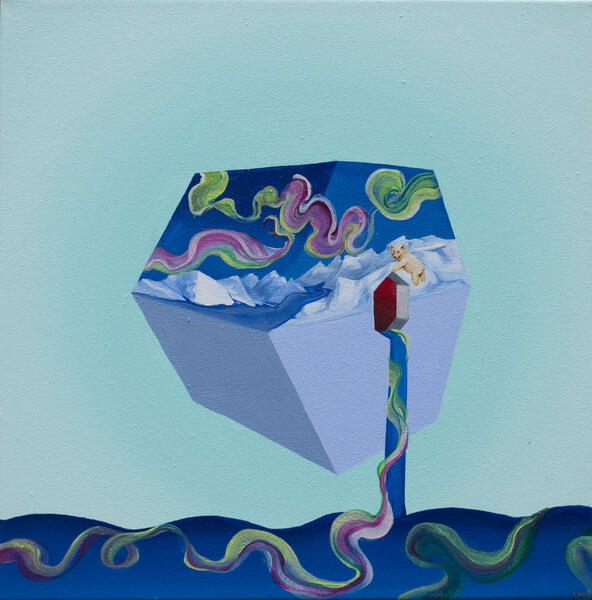 Glacier with a polar bear12 in x12 in Acrylic on canvas August 12, 2015
Glacier with a polar bear12 in x12 in Acrylic on canvas August 12, 2015 -
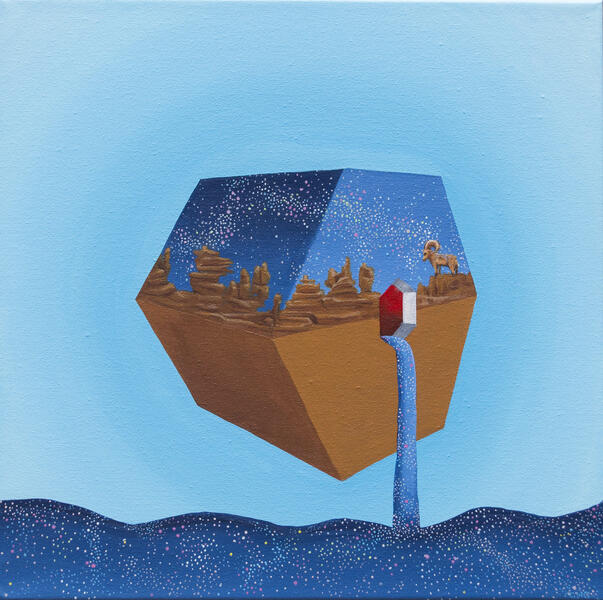 Bryce canyon with a mountain goat12in x12 in Acrylic on canvas August 12, 2015
Bryce canyon with a mountain goat12in x12 in Acrylic on canvas August 12, 2015 -
 Stellar CirculationAcrylic on canvas 36"x50" 2016
Stellar CirculationAcrylic on canvas 36"x50" 2016 -
 Cumulus SinkAcrylic on canvas 30"x40" 2016
Cumulus SinkAcrylic on canvas 30"x40" 2016 -
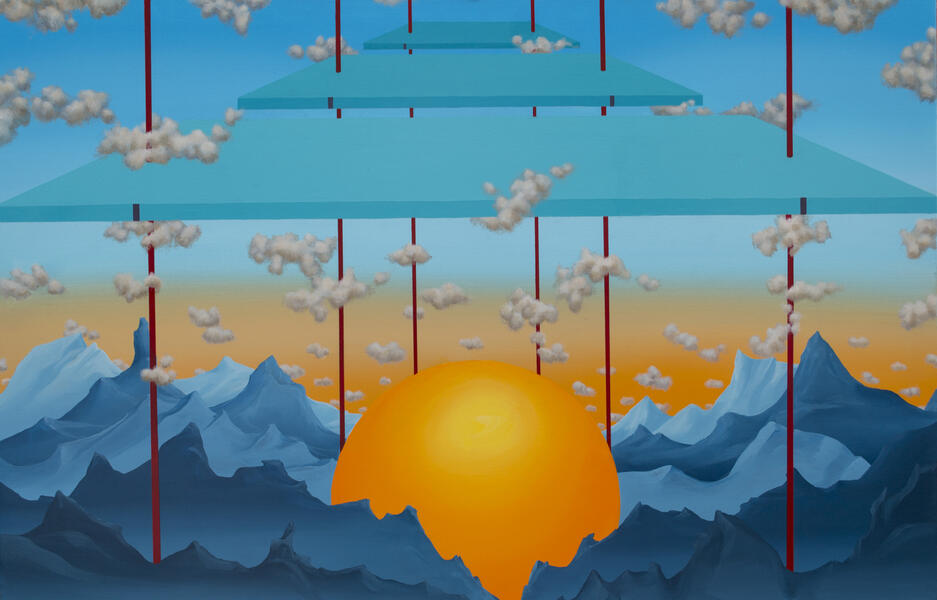 Sun SuspensionAcrylic on canvas 30"x40" 2016
Sun SuspensionAcrylic on canvas 30"x40" 2016 -
 River Deltas36”x72” acrylic on canvas 2014
River Deltas36”x72” acrylic on canvas 2014 -
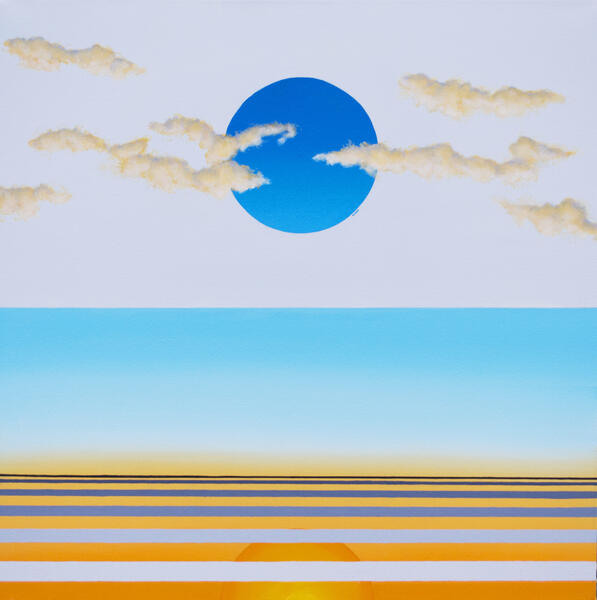 sunset simulationAcrylic on canvas 24"x24" 2015
sunset simulationAcrylic on canvas 24"x24" 2015 -
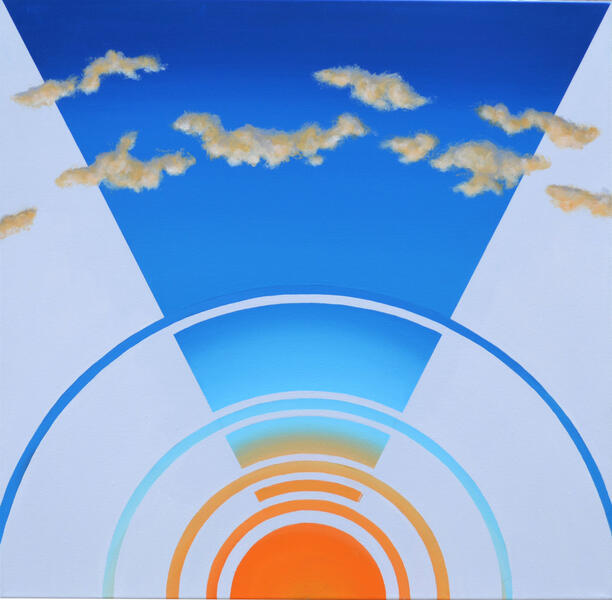 Sunrise SimulationAcrylic on canvas 24"x24" 2015
Sunrise SimulationAcrylic on canvas 24"x24" 2015
Architectural bodies
-
 Palm treesAcrylic on Canvas 40inx50in December 1, 2015
Palm treesAcrylic on Canvas 40inx50in December 1, 2015 -
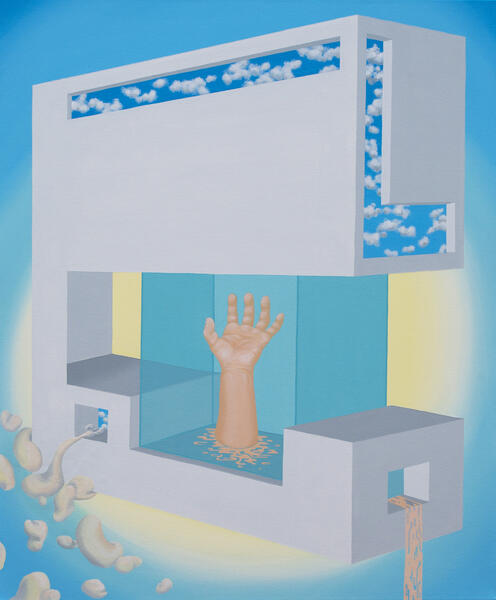 Hand Place.jpgAcrylic on Canvas 36"x30"
Hand Place.jpgAcrylic on Canvas 36"x30" -
 Inside a Modern Home.jpgAcrylic on canvas 36"x50"
Inside a Modern Home.jpgAcrylic on canvas 36"x50" -
 Leg:Bridge.jpgAcrylic on canvas 30"x50"
Leg:Bridge.jpgAcrylic on canvas 30"x50" -
 Materia Prima.jpgAcrylic on canvas 48"x60"
Materia Prima.jpgAcrylic on canvas 48"x60" -
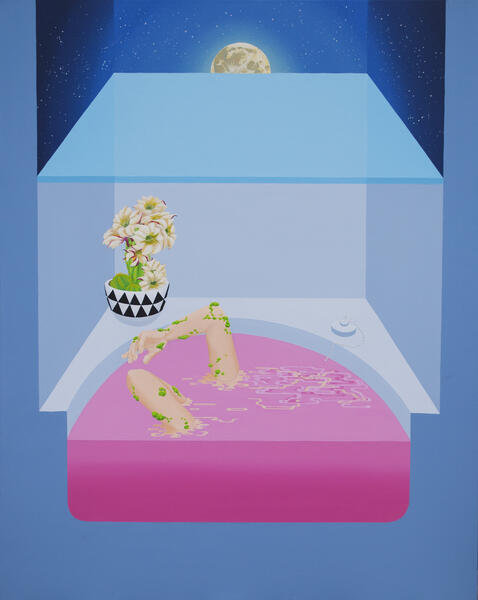 moonrise Bath.jpgAcrylic on canvas 50"x40"
moonrise Bath.jpgAcrylic on canvas 50"x40" -
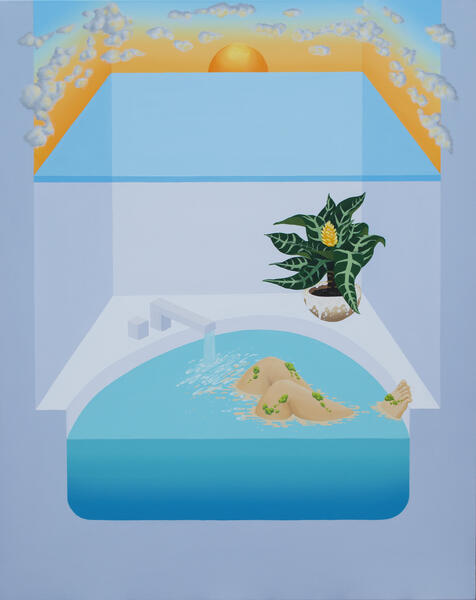 Sunset Bath.jpgAcrylic on canvas 50"x40"
Sunset Bath.jpgAcrylic on canvas 50"x40"

